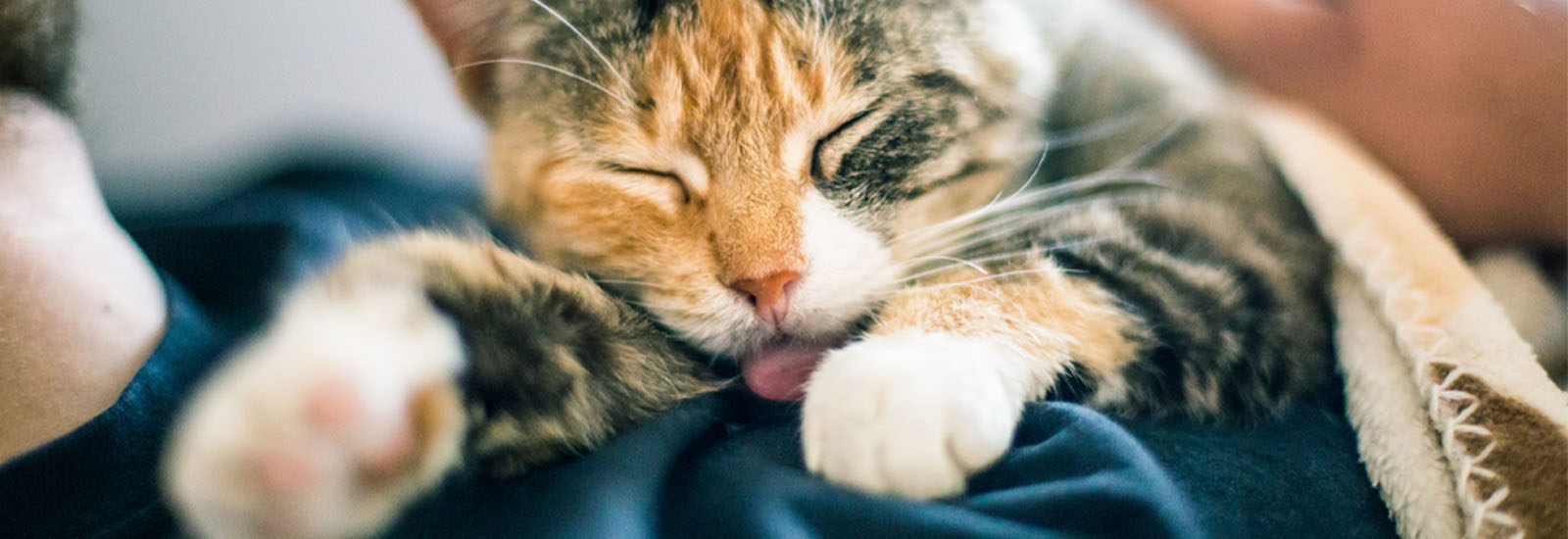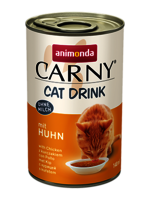My cat isn't drinking enough - what should I do?
Most cat owners know the problem: cats often tend to drink too little. However, keeping hydrated is just as important for animals as it is for us humans. Find out how you can encourage your pet to drink.
As former desert animals, cats generally need very little water. They owe their relatively low fluid requirements to their powerful kidneys. Their bodies have adapted to cover most of their fluid requirements through their food. In the wild, their main source of fluid is their prey, which consist mainly of water. When it is given wet food, a cat is therefore able to obtain a large part of its water requirements in this way, which is why it will not usually drink a significant additional amount.
How can you spot dehydration in a cat?
To find out if your cat is dehydrated, you can use the pinch (skin turgor) test. To do this, carefully lift a fold of the cat’s skin and gently pinch it together for a short moment. If the skin immediately returns to its original position, this usually means that the cat is drinking enough. If not, this may be a sign of dehydration. A visit to the vet will help to put your mind at rest.
Is my cat drinking too little?
Basically, a cat’s water requirements depend on a variety of factors such as its age, weight and size, its food, the room temperature, its level of physical exertion and any illnesses. Therefore, only an average value can be given, which is 55 millilitres per day and kilogramme (body weight). If you are not sure whether your cat is drinking enough, you can measure the amount of water provided and check the remaining amount with a measuring cup 24 hours later.
A cat weighing five kilogrammes therefore needs around 275 millilitres of water. If it eats around 250 grams of wet food a day, it will already consume 200 millilitres of water (assuming the food has an 80 percent moisture content). Therefore, the cat only needs to drink an additional 75 ml of water. If, on the other hand, it is only given dry food, the amount required will be significantly higher. Dehydration should be avoided at all costs. As with humans, this can lead to serious health problems. For example, the kidney can be severely damaged and urinary gravel or kidney stones can in the worst case lead to chronic kidney failure.
What happens when cats do not drink enough?
Outdoor cats that are fed with wet food at home cover almost all their liquid requirements through the cat food, the prey they catch, and any drinking sources on their expeditions. The situation is different if the cat is given dried food. With a moisture content of around ten percent, dry food does not provide the necessary amount of liquid. To ensure that the cat is getting enough amounts of water, it must always have unrestricted access to fresh water.
Unfortunately, low water intakes with food are not always compensated by increased drinking. What happens when cats do not drink enough? Cats can be prone to urinary stones or urinary stones or kidney problems if their water intake is reduced.
Cats naturally only drink small amounts
As former desert animals, cats generally need very little water. They owe their relatively low fluid requirements to their powerful kidneys. Their bodies have adapted to cover most of their fluid requirements through their food. When it is given wet food, a cat is therefore able to obtain a large part of its water requirements in this way.
Encouraging your cat to drink
There are a number of tips and tricks that you can use to encourage your cat to drink. Not only the correct position of the drinking bowl, but also the bowl itself can influence how much a cat drinks. On the one hand, this concerns the material: plastic and rubber can give off a certain smell. With bowls made of ceramics, glass or metal, this is seldom the case. The bowl should also not be too high or too narrow, but preferably wide and shallow, so the cat can take up the water with its whiskers. The water bowl should also be non-slip; if necessary, a special non-slip mat placed under the bowl can be helpful here. The water itself can also influence how much your cat drinks. If it ignores fresh water, try filtered or boiled water. Some cats also like to drink rainwater – this is always worth a try!
Nutritious complementary cat food can make drinking an enjoyable experience for your pet. For example, the new Carny Cat Drink – a cat drink with the finest strips of meat. Available in a practical 140 millilitre can, it provides cats with an extra portion of liquid and encourages them to drink naturally. The cat drink has no added milk whatsoever and is also free from soya, grain, and artificial colours and preservatives. With delicious chicken and tuna varieties, there is something for every cat’s taste. This makes drinking a mouth-watering culinary experience for your cat.
Is your cat not drinking enough? A drinking fountain & cat drink
A drinking fountain that suggests to the cat that the water is fresh not only provides a fun activity for your pet, but also encourages it to drink more liquid. There is also the option of adding one to two tablespoons of water to a cat’s food and thus providing a pet that is not drinking enough with an additional amount of liquid – without it noticing.
Nutritious complementary cat food can make drinking an enjoyable experience for your pet. For example, the new Carny Cat Drink – a cat drink with the finest strips of meat. Available in a practical 140 millilitre can, it provides cats with an extra portion of liquid and encourages them to drink naturally. The cat drink has no added milk whatsoever and is also free from soya, grain, and artificial colours and preservatives. With delicious chicken and tuna varieties, there is something for every cat’s taste. This makes drinking a mouth-watering culinary experience for your cat. If your cat is still reluctant to drink despite the above attempts to encourage it, consult your vet.
You may also like this

Feeding your cat
Tips on food and a healthy diet
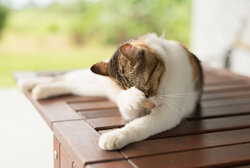
When a cat keeps scratching itself
Possible causes if your cat keeps scratching itself
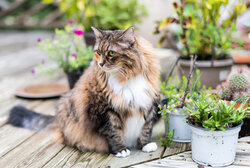
Excess weight in cats
If a cat weighs too much, there is the risk of health problems
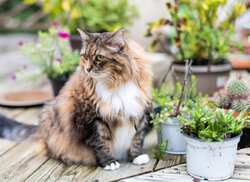
Blood pressure in cats
Measuring blood pressure reveals the efficiency of the heart
